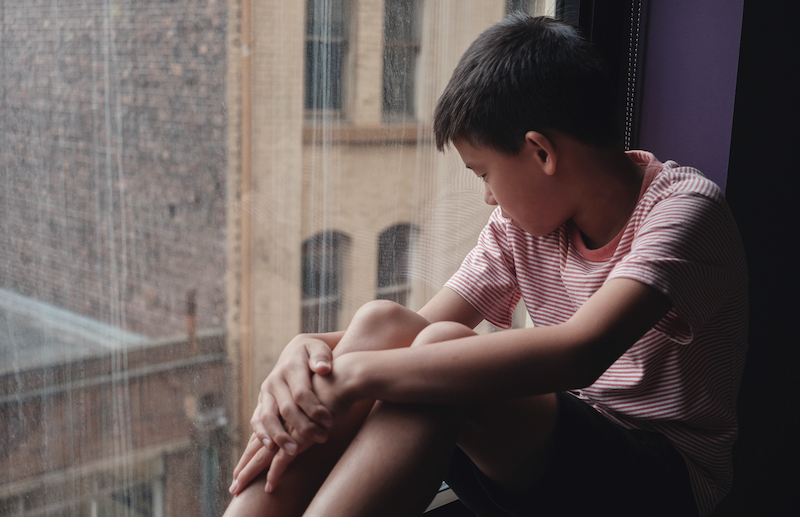According to a recent study, 10% of preteens already are curious about alcohol, tobacco and marijuana
They may only be in fourth or fifth grade, but 1 in 10 preteen children already say they’re curious about using alcohol or tobacco products, and 1 in 50 say they’re curious about using marijuana, a new study shows.
As many as 3% of the nearly 12,000 9- and 10-year-olds surveyed say they already have a friend who uses one of these substances. And those who said they did were also much more likely to be curious about trying alcohol or tobacco and other nicotine-containing products themselves.
“The earlier in adolescence a child begins using these substances, the greater the potential impact on brain development and functioning.”
—Meghan Martz, University of Michigan
Meanwhile, up to 35% of the children’s parents said their kids may have easy access to alcohol at home, while smaller percentages said the same about tobacco (7%) or marijuana (3%).
And about 25% of parents said they hadn’t yet set rules for their preteen children about whether they’re allowed to use these substances. The study, published in Drug & Alcohol Dependence Reports, was led by a University of Michigan researcher using data from a large national project.
Demographic Variations
The findings show considerable variation by gender, race/ethnicity and family income in many of the measures. Across the board, boys were more likely to be curious about substances than girls.
Black parents were much more likely than other parents to have a rule that their children may not use alcohol, tobacco or marijuana, and low-income parents were slightly more likely than those with middle or high incomes to have such a rule.
Across all groups, kids were more likely to be curious about alcohol or nicotine if their parents said that these substances are readily available in the home.
Meanwhile, preteens whose parents made $100,000 or more per year were much more likely to be curious about alcohol, and their parents were more likely to say it was readily available in the home. Lower-income children, with family incomes of $50,000 or less, were slightly more likely to be curious about nicotine and marijuana, and to have it available in the home.
Across all groups, kids were more likely to be curious about alcohol or nicotine if their parents said that these substances are readily available in the home. The same was true for nicotine curiosity among kids whose parents hadn’t made specific rules about their use of tobacco or other nicotine-containing substances.
This information could help future efforts to tailor preventive messages and measures, and identify children most at risk of future problems, says Meghan Martz, lead author of the new paper and a research assistant professor specializing in the development of substance use disorders in the Department of Psychiatry at Michigan Medicine, U-M’s academic medical center.
“Household environments and messaging from parents can play a major role at this age, while the influence of peers will become more important over time.”
—Meghan Martz
“We were very surprised by the percentage of parents—more than 25% of the entire group—who hadn’t made any explicit rules about substance use for children this age. Compared to all other race/ethnicity groups, Black parents were the most likely to have made rules against substance use, suggesting this subgroup in particular may be using early protective strategies,” said Martz.
“The earlier in adolescence a child begins using these substances, the greater the potential impact on brain development and functioning,” she explained. “Their household environments and messaging from parents can play a major role at this age, while the influence of peers will become more important over time.”
Martz and her U-M colleagues are part of the national team studying thousands of children and parents over many years through a national project called the Adolescent Brain Cognitive Development (ABCD) Study. Hundreds of children and their parents have enrolled at U-M.
More Data Needed
The findings are some of the first ever about substance use curiosity and access in this age group.
A previous study by other ABCD Study researchers showed that at age 9 or 10, 1 in 5 of the children had sipped alcohol but they were otherwise “substance naive” and had not used nicotine, marijuana or more than sips of alcohol. All were aware of what these substances are.

Meanwhile, other U-M researchers who run the survey have shown that about 1 in 5 14-year-olds have used alcohol at least once in the past year, and tobacco and marijuana use are both reported by 11%.
For the new study, the researchers also looked at whether a child’s family history of alcohol problems among their biological parents had any bearing on these measures.
The only significant finding was that parents of children with such a family history were much less likely to say that alcohol was easy to access in their home—suggesting that their parents had taken steps to secure it or did not keep it in the home.
Martz notes that the size of the national ABCD Study, and the brain imaging being done while children perform different tasks and tests, will help the team study how family history of alcohol issues may be involved in other ways. The current study provides a baseline; newer data will likely show change over time.
Her research also includes an effort to study how early signs that a child is vulnerable to mood disorders such as depression, or to anxiety, correlate with other measures important to substance use and misuse. She and colleagues recently presented data on this topic.
In addition to Martz, the study’s authors include Mary M. Heitzeg, PhD, co-principal investigator of the ABCD Study site at U-M and a professor of psychiatry, and ABCD Study researchers from around the country including senior author Natasha Wade, PhD, of the University of California San Diego.
This article is reprinted with permission from the University of Michigan’s Addiction Center, a partner of TreatmentMagazine.com in working to improve addiction outcomes.
Top photo: Shutterstock














